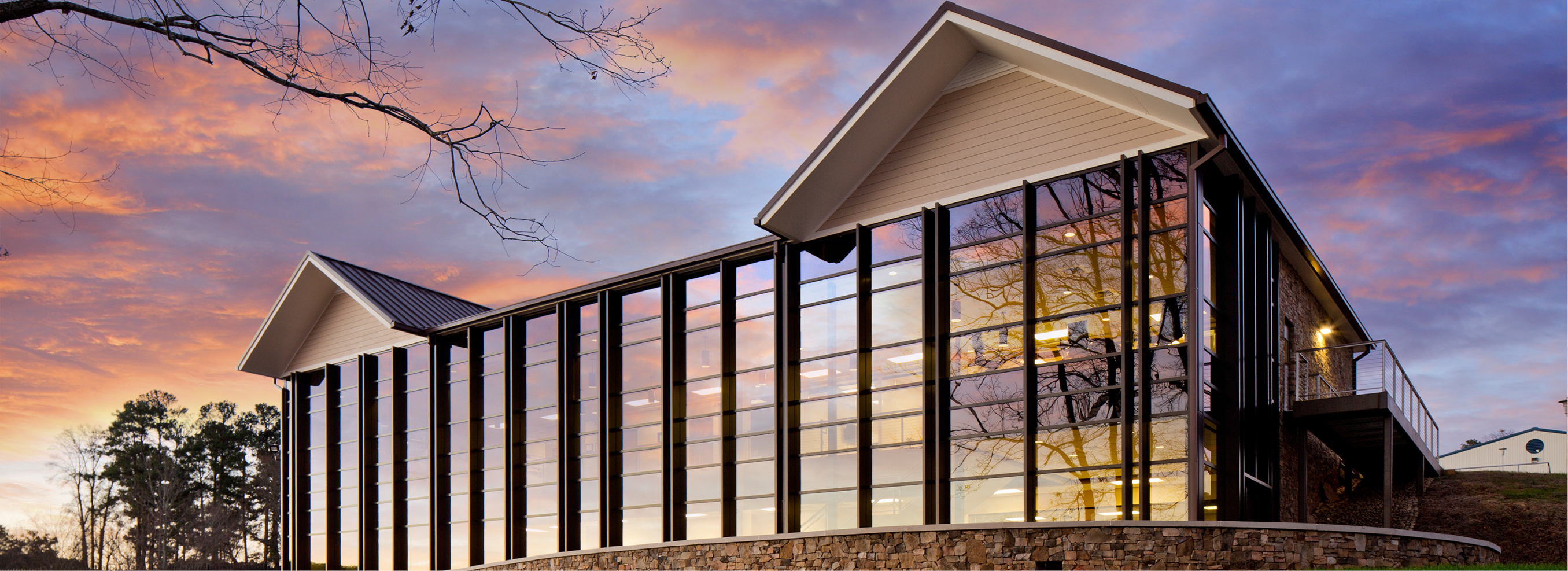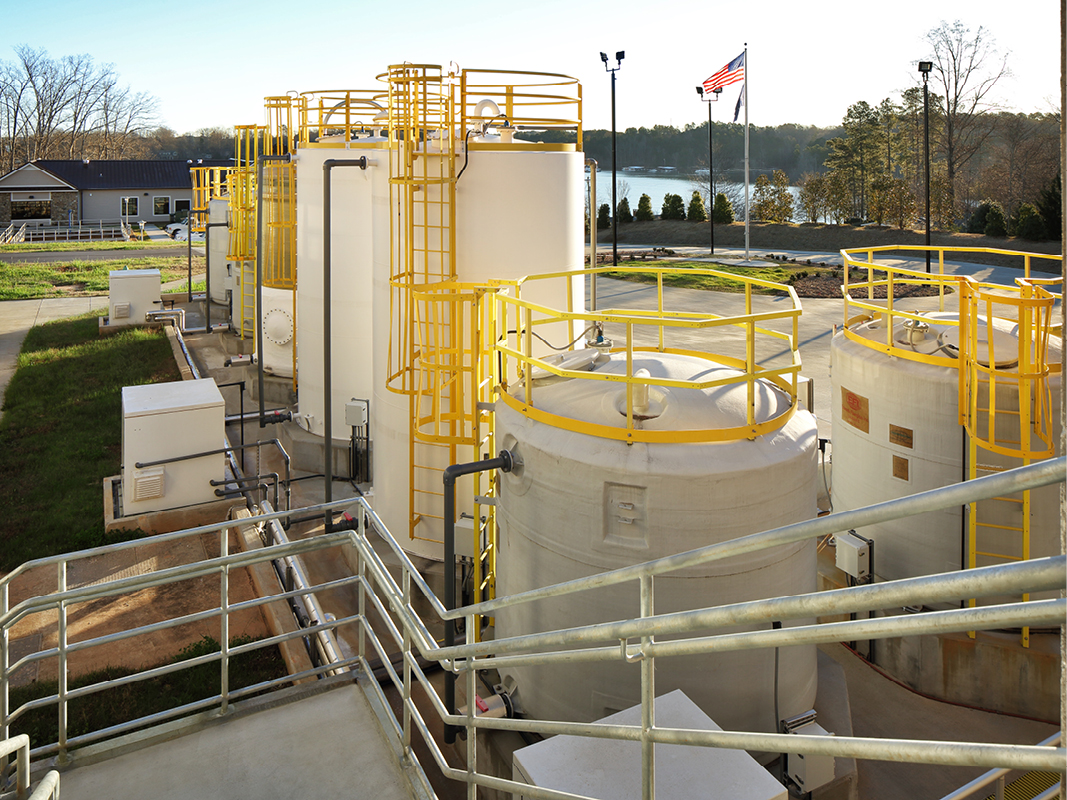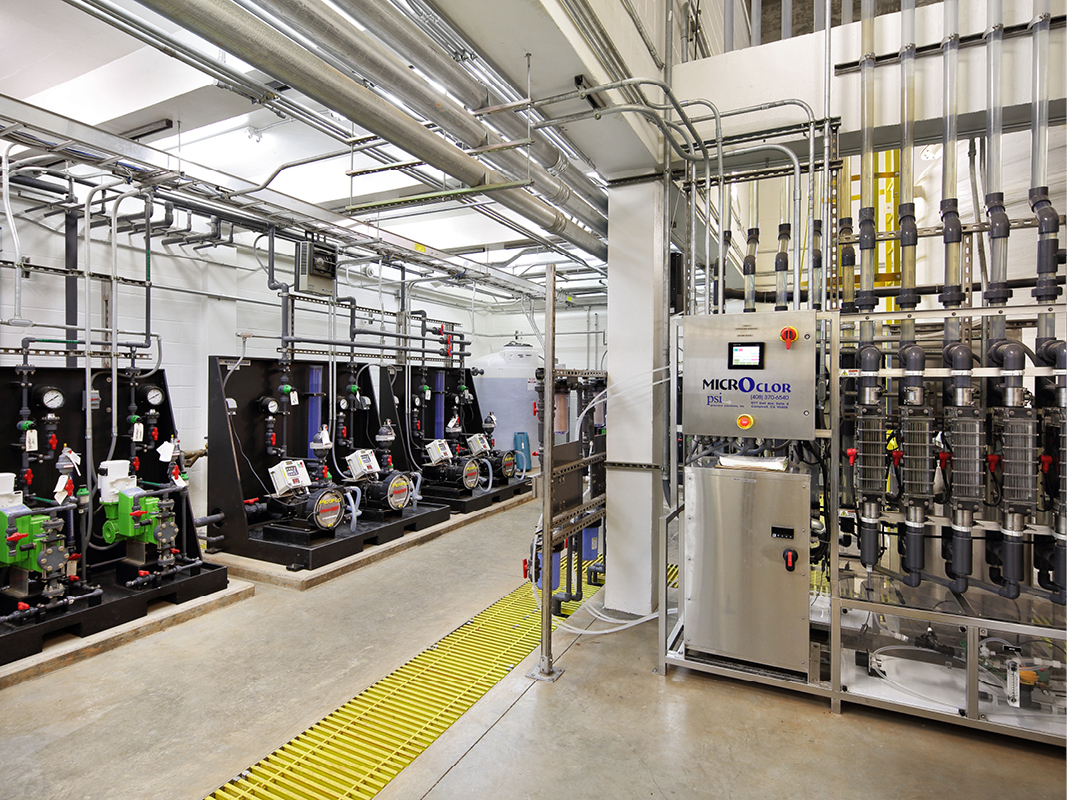Seneca Water Treatment Plant receives award for sustainability
July 25, 2017 · Accolades, Projects

Seneca’s Water Treatment Plant Improvements project in South Carolina is the recent recipient of the Envision Silver award from the Institute for Sustainable Infrastructure (ISI). The water treatment plant is the third infrastructure project in South Carolina to earn an Envision award from ISI, and is the first to earn a Silver award in the state. The Envision system rates the sustainability of infrastructure projects across the full range of environmental, social, and economic impacts.
“The project team chose to pursue Envision verification for the Seneca WTP toward the end of the project when we realized how closely the design and construction methods aligned with Envision’s purpose. Sustainable construction methods not only provided the City of Seneca with an environmentally-friendly facility, but also saved time and money throughout the project. Collaborating with local stakeholders allowed aspects of the project to move forward and gave the community a finished product they are proud to live and play next to,” said Bryan Royal, vice president, Harper Corporation.
Located in the Normandy Shores neighborhood, Seneca’s Water Treatment Plant has been operational for decades, but required significant upgrades to better serve the needs of the growing community. The project team incorporated several sustainability attributes into the project’s design, including measures to reduce operational noise, aesthetic features to preserve the local character of the community, and improvements to the safety of the facility for workers and residents in the area.
The City of Seneca and Seneca Light and Water worked closely with Harper Corporation; Hulsey McCormick & Wallace; and GMC to deliver the award-winning project.

As a collaboration between ISI and the Zofnass Program for Sustainable Infrastructure at the Harvard University Graduate School of Design, the Envision system rates the impact of sustainable infrastructure projects as a whole. The Envision system measures sustainability in five categories: Quality of Life, Leadership, Natural World, Resource Allocation, and Climate and Risk. These key areas contribute to the positive social, economic, and environmental impacts on a community. Several of the sustainable accomplishments of the project include:
Quality of Life: The Seneca Water Treatment Plant was upgraded to operate more efficiently, improve safety for plant employees and the adjacent neighborhood, and make the plant more accessible for public education about water treatment in Seneca. The project team is also creating a Water Educational Center that will be accessible to schools, community groups and the public who wish to tour the facility, learn about the role of the Seneca Water Treatment Plant in the community, and take advantage of the natural space on the site.
The plant’s old intake structure consisted of a series of large pumps on a dock that drew water from Lake Keowee (a man-made reservoir created to serve the needs of the local power utility and for public recreation), and pump it to the plant for treatment. The community felt this apparatus was an eyesore and requested that the design team create a more attractive structure. The final intake structure is similar to a lighthouse, fitting in with the local character and design elements in the community while also reducing noise pollution from the pumps. Due to the location of the plant in a residential area, on a recreational lake and near the South Cove County Park, a protected resource and historical site, the aesthetic upgrades to the plant were especially important, and stakeholder input regarding the design elements were taken into serious consideration.
Public and plant worker safety was also a top priority for the project team. The original plant used a gaseous form of chlorine in the water treatment process and the project team determined that extreme toxicity of the gas could negatively impact public and worker health and safety, and the team switched from the gaseous chlorine to an on-site generated liquid sodium hypochlorite. This process utilizes pure salt as its foundation and a generator to convert the solution to sodium hypochlorite. Switching to sodium hypochlorite has numerous benefits: the components are safer to transport; the final solution is generated onsite, reducing shipments in the neighborhood; the sodium hypochlorite offers greater flexibility in the strength of solutions that can be used for processing water; and it eliminates many of the health and safety risks associated with chlorine gas.
Leadership: The City of Seneca and the project team worked hard to build a positive relationship with the community. They solicited stakeholder input throughout the project, by hosting meetings with the local Homeowners Association, establishing an open line of communication on the city’s website, and posting video updates of the plant’s renovations and the rationale behind the upgrades. Relationship- building was a top priority for the city and the project team. After the project was completed, a ground- breaking ceremony was scheduled and community leaders and residents attended. Stakeholders felt their input was respected and appreciated throughout the process, and the Homeowners Association provided a letter of gratitude to the project team after the ground-breaking ceremony and after experiencing the newly improved plant.
Resource Allocation: The project team specified locally- sourced materials for this project to the extent possible. Specifically, plants, aggregates, and soils were purchased from suppliers near the job site. In total, more than 60% of materials by cost were locally sourced.

In addition, the project team identified opportunities to reuse some of the existing structures and materials on site. This was done to reduce the amount of materials that would be directed to landfill, and to make the project cost-effective. In total, 30% of materials used on the project were either reused or contained recycled content.
The upgraded Seneca Water Treatment Plant is more energy efficient than the previous plant. By eliminating the old sludge clarifier, the redundancy in water flow, and replacing the sludge press with a screw press, the project team provided significant energy savings for the plant, and is estimated to use 30% less energy than the industry standard.
“The degree to which stakeholders were engaged in this project will no doubt have a lasting positive impact on the community and its relationship with the owners and operators of this facility. Residents will benefit from the numerous quality of life and ecological enhancements made to Seneca’s water treatment plant. ISI is pleased to present the Seneca Water Treatment Plant Improvements project with the Envision Silver award for sustainable infrastructure,” said ISI President and CEO John Stanton.
###
MEDIA CONTACTS
ISI: Laura Bynum, Media Relations and Communications Manager
City of Seneca: Bob Faires, Director of Utilities
Harper Corporation: Bryan Royal, Vice President, Environmental Systems Division
Hulsey McCormick & Wallace: Tom Vollmar, P.E., Vice President – Technical Services
GMC: Kevin Laird, Vice President, Engineering, Greenville
About City of Seneca
Seneca, founded in 1874, is nestled in the foothills of the Blue Ridge Mountains. It is located in the northwestern tip of South Carolina and was dubbed “The City of Opportunity” at its founding. With the cool waters of pristine Lake Keowee, Lake Jocassee, and Lake Hartwell nearby, the area offers many recreational opportunities. Magnificent waterfalls and abundant wildlife make hiking the many mountain trails or casting for trout in mountain streams a wonderful experience. Fishing the lake waters, visiting the state and county parks or canoeing and kayaking on the scenic Chattooga River are great recreational adventures year-round. Favorably positioned between Atlanta, GA, and Greenville, SC, just minutes away from Clemson University, Seneca and Oconee County have gained national acclaim for its natural beauty, quaint towns, antique shopping and is a favorite destination for history buffs and outdoor enthusiasts alike.
About Harper Corporation
Harper Corporation is a full-service general contracting and construction management firm headquartered in downtown Greenville, South Carolina. An award-winning company, Harper consistently receives recognition in the areas of quality, safety, environmental stewardship, and community involvement. Throughout our 67-year history, Harper has had the opportunity to develop strong professional relationships with clients across the Carolinas. By bringing to life the vision of our clients, Harper leaves a lasting impression on members of the community. The core of our company is geared toward collaborating with owners and design professionals in an open and transparent manner, enabling the owner to know how every project dollar is being invested.
About Hulsey McCormick & Wallace
Hulsey McCormick & Wallace, Inc. is an environmental engineering consulting firm with offices in Metro- Greenville, South Carolina and Hickory, North Carolina. HMW has specialized in delivering high performance, cost-efficient civil and environmental engineering solutions for projects throughout the Southeast with an exceptional team of experienced engineers, environmental scientists, and technical staff. Since 1998, Hulsey McCormick & Wallace has built a reputation for providing sound and responsive engineering and consulting services in the public and private sectors. With a commitment to building value for clients and improving the communities they serve, HMW incorporates the latest technology and innovative thinking while keeping responsiveness, accountability, and integrity as its foundation.
About ISI Envision®
Envision® is the product of a joint collaboration between ISI, which was founded by three national engineering associations: American Society of Civil Engineers, American Council of Engineering Companies, and American Public Works Association, and the Zofnass Program for Sustainable Infrastructure at Harvard University Graduate School of Design. Information on ISI and Envision can be found on the ISI website, www.sustainableinfrastructure.org.